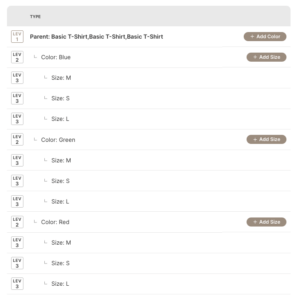Introduction to Kontainer PIM
Kontainer PIM (Product Information Management) is designed to help you manage and enrich all your product data in one centralized system. It works hand in hand with Kontainer DAM (Digital Asset Management), giving you complete control over both product data and related digital assets like images, videos, and documents.
With Kontainer PIM, you can streamline your product workflows, ensure consistency across channels, and save time when managing product catalogs — no matter how complex.
How PIM and DAM Work Together
Kontainer PIM focuses on structured product data such as titles, descriptions, specifications, pricing, and more. Kontainer DAM, on the other hand, stores and organizes all your rich media assets. Together, they form a powerful ecosystem:
- DAM handles your visual and media content.
- PIM handles your structured product information.
These two systems are fully integrated, so you can easily link product data to the right assets, like images, videos, and PDFs — and vice versa.
Key Concepts in Kontainer PIM
To make the most of Kontainer PIM, it helps to understand a few important concepts and terms:
Product Families
Product Families group products that share the same data structure. For example, a family for “T-Shirts” might include fields like Size, Material, and Fit, while a “Shoe” family would have fields like Size, Sole Type, and Lacing System. This ensures each product type has the relevant fields it needs.
Variations
Variations represent differences within a product, such as different sizes, colors, or materials. For instance, a T-Shirt might come in three colors and five sizes—each of these combinations would be a variation.

Dimensions
Data in Kontainer PIM can be dimensioned, meaning it can vary depending on the context. Common dimensions include:
- Language (e.g., English, Danish, German)
- Currency (e.g., EUR, USD)
- Units (e.g., centimeters vs. inches)
This allows you to manage localized content, prices, or measurements within a single product record.
Note: Not all customers will use or require dimensions in their product data—this depends on your specific setup and needs.
Ressources
Resources are used to manage the values in dropdown fields. These values can carry more than just a label. For example:
- A color option like “Red” can have a HEX code and different names depending on the sales channel.
- A material like “Cotton” can include origin, weight, or certification details.
Resources help enrich your product data and ensure consistency across all outputs.
Custom Data Fields
Kontainer PIM is fully customizable. You can define your own data fields to match your business needs—whether you need a field for Sustainability Certifications, Washing Instructions, or Retailer-Specific Descriptions.
Channels
In Kontainer PIM, Channels are used to group and display products based on specific criteria. They help organize, filter, and work with subsets of your product data in different contexts.
Channels can serve many purposes, for example:
- A category-based channel, such as all products labeled as “T-shirts”
- A translation overview, showing all products missing a German description
- A media check, highlighting products that don’t yet have a packshot attached
- An approval workflow, used for reviewing and signing off on new or updated products
- A live feed, showing all products currently published on a webshop or a specific marketplace
Channels can be made “smart” or dynamic by adding channel filters, and they make it easier to manage and export only the relevant data for a particular task or target.
Data Integration: Import & Export
Kontainer PIM is built for integration. You can:
- Import product data from external sources such as your ERP system, ensuring consistency and reducing manual data entry.
- Export structured product data to all your channels: webshops, print catalogs, marketplaces, POS systems, or internal teams.
This two-way flow makes it easy to keep your product content up to date everywhere it’s needed.